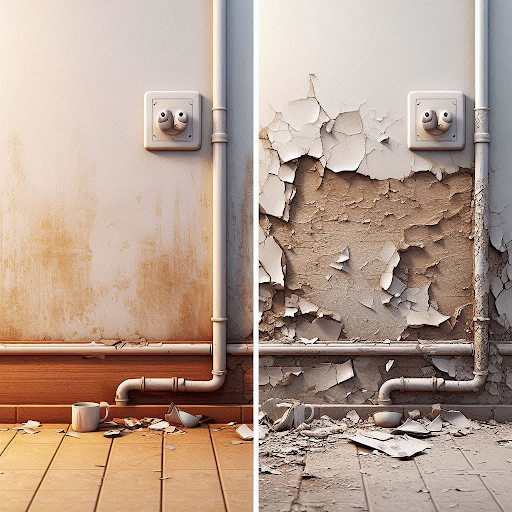Understanding the distinction between wear and tear and damage is crucial for managing property repairs and security deposits effectively. Here’s a detailed breakdown to help clarify the differences:
1. Wear and Tear
Wear and tear refer to the natural deterioration of a property that occurs over time due to regular use. Common examples include:
Faded Paint: Color loss on walls due to exposure to light and air.
Worn Carpets: Carpet fibers thinning out or becoming flat from everyday foot traffic.
Minor Scuffs: Small scratches or marks on walls and floors from normal use.
Wear and tear is expected and not usually considered a tenant’s responsibility.
2. Damage
Damage involves harm caused by misuse, negligence, or accidents. It typically requires repair or replacement beyond normal wear. Examples include:
Broken Windows: Glass cracked or shattered due to accidents or intentional actions.
Stains on Carpets: Large or deep stains resulting from spills or mishandling.
Holes in Walls: Damage from impacts or intentional actions that create noticeable openings.
Damage caused by tenants may affect security deposits or require additional repairs.
3. Security Deposits
The handling of security deposits should reflect the nature of the property issues:
Wear and Tear: Typically, wear and tear is not deducted from the security deposit, as it is considered a natural result of use.
Damage: Costs for repairs due to tenant-caused damage may be deducted from the security deposit, provided it is documented and justified.
Understanding these guidelines ensures fair handling of security deposits and repair costs.
4. Maintenance
Regular maintenance helps manage wear and tear and prevent it from escalating into more significant problems. Consider:
Routine Inspections: Conduct periodic inspections to identify and address issues early.
Preventive Measures: Implement preventive maintenance to reduce the impact of wear and tear.
Proper maintenance can extend the life of property components and reduce repair costs.
5. Documentation
Thorough documentation is key to distinguishing between wear and tear and damage:
Pre-Tenancy Condition: Document the property’s condition before new tenants move in, including photographs and detailed notes.
Post-Tenancy Condition: Record the property’s condition after tenants move out to identify any changes or damage.
Accurate documentation supports fair assessments of repairs and security deposit deductions.
Manage Property Repairs Fairly
Understanding these distinctions helps you manage repairs appropriately and handle security deposits fairly. Have questions about property maintenance? Contact Pioneer Property Management for expert advice on managing wear and tear versus damage in your rental property!


